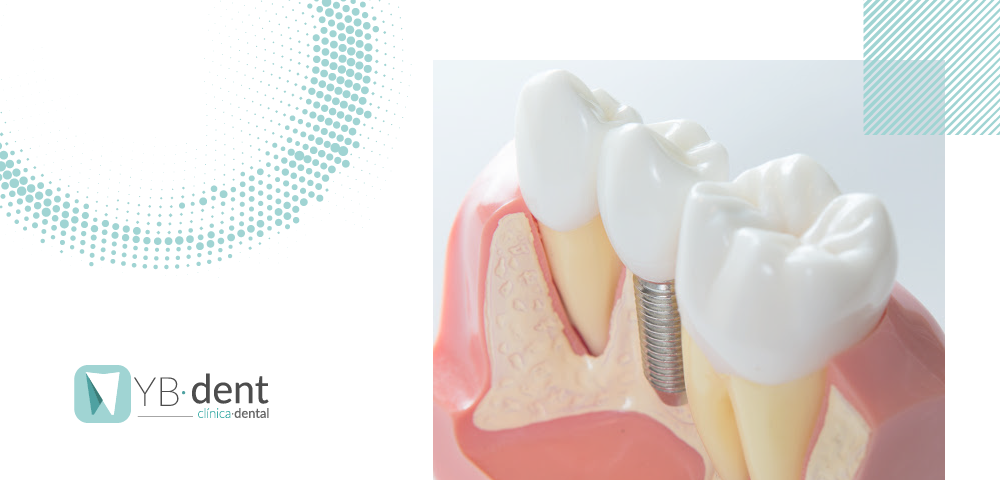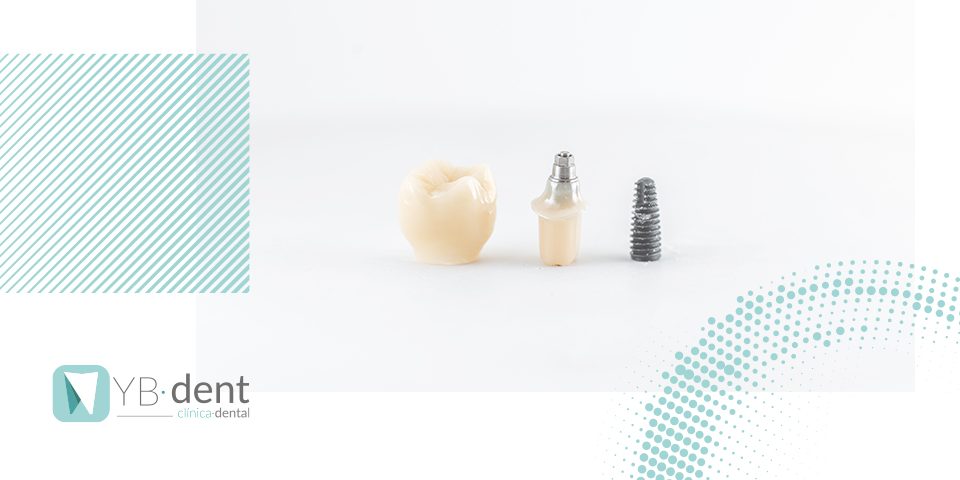Descubre en qué consiste la periimplantitis. ¿Cómo combatirla?

Una de las técnicas más utilizadas hoy en día para rehabilitar la cavidad oral tras la pérdida de uno o varios dientes es el implante dental. Estos pequeños dispositivos son cada vez más estéticos, duraderos y seguros de llevar. Cuando se produce la pérdida de un diente, lo prioritario debe ser siempre rehabilitar y conservar el diente original. No obstante en ocasiones, esto no es posible. Conviene saber que cuando se va a instalar un implante dental es esencial que el paciente posea una salud gingival correcta. Las encías deben estar sanas y libres de infecciones. En caso de que exista gingivitis o periodontitis, es un problema porque se puede desarrollar la denominada periimplantitis, por lo que en estos casos instalar un implante dental sería un fracaso.
¿Qué es la periimplantitis?
En esencia, estas enfermedades son aquellas que aparecen y desarrollan en los tejidos que se sitúan alrededor de los implantes dentales. Las más frecuentes y conocidas son la mucositis y la periimplantitis. A pesar de que en la actualidad los implantes dentales han avanzado mucho y poseen una tasa de éxito superior al 90%, en algunos casos este tratamiento puede fracasar si aparecen enfermedades periodontales.
La principal diferencia que encontramos entre la mucositis y la periimplantitis es que la primera de ellas afecta a los tejidos blandos, haciendo que se inflamen pero que si se tratan de la forma correcta no implican la pérdida del hueso. La periimplantitis no solo afecta a los tejidos blandos, sino que también produce la destrucción de la masa ósea que fija y sujeta el implante dental; en algunos casos, al igual que pasa con la periodontitis, la periimplantitis puede provocar la retracción de las encías. Como podemos ver esta segunda enfermedad periimplantarias es la más grave de las dos que hemos explicado.
¿Cómo se detecta y produce la periimplantitis?
Los síntomas que pueden hacernos pensar que padecemos la periimplantitis pueden ser los siguientes:
- Enrojecimiento de la mucosa que se sitúa alrededor del implante.
- Sangrado del sondaje realizado para la instalación del implante.
- El implante se mueve.
- Si se realiza una radiografía, pérdida ósea en el hueso de soporte.
También existen otros factores de riesgo que pueden favorecer la aparición de esta afección:
- Consumo de tabaco
- Tipo de superficie del implante instalado
- Calidad ósea deficiente del hueso de soporte
- No seguir una correcta higiene oral
¿Cómo se debe tratar?
El principal problema de padecer esta patología es que puede causar la pérdida del implante. Por esta razón, hasta no hace muchos años la única manera de tratar la periimplantitis era la retirada del implante. Afortunadamente, en la actualidad esto ya no se tiene que realizar, pero dependiendo del grado de desarrollo de la periimplantitis, se deberá seguir uno de los siguientes tres tratamientos:
- Tratamiento para regenerar los defectos óseos: mediante esta técnica, se elimina el tejido de granulación para eliminar las bacterias causantes de esta infección. Gracias a este tratamiento, se logra reducir la inflamación.
- Tratamiento en la superficie del implante con objeto de eliminar la placa bacteriana acumulada en los dientes
- Tratamiento de los defectos óseos: mediante la utilización de materiales para sustituir el hueso que se encuentra dañado y realizando un curetaje de las lesiones periapicales se puede evitar la progresión de esta patología.
¿Cómo podemos evitar la aparición de la periimplantitis?
Si te has sometido recientemente a la instalación de un implante dental y te preocupa desarrollar la periimplantitis, no debes preocuparte. Existen maneras de combatirla y la mayoría de recomendaciones, como ahora verás, son muy fáciles de seguir.
- Cuida al máximo tu higiene dental: aunque sea obvio, no deja de ser importante cumplir esta recomendación, ya que una de las principales causas del desarrollo de la periimplantitis es la formación de sarro y bacterias alrededor del implante dental.
- Escoger un buen especialista en implantología ya que la correcta posición del implante es esencial para no favorecer la aparición de esta enfermedad.
- Evita el consumo de tabaco, ya que diversos estudios han demostrado que, al hacerlo, se está favoreciendo la formación de la periimplantitis.
- Realizarse de forma periódica limpiezas bucodentales ayuda a que no aparezcan aglomeraciones de bacterias, sarro y placa en los dientes, que pueden dañar la mucosa en la zona donde se encuentra el implante.
En Clínica Dental YB·dent contamos con un equipo de odontólogos con amplia experiencia en la implantología dental por lo que te encontrarás en buenas manos para que, en caso de necesitarlo, el implante se coloque en la posición correcta. Además, si tienes alguna duda de cómo seguir el tratamiento posterior a la instalación de este dispositivo, en esta clínica dental en Valencia siempre estaremos a tu disposición para ayudarte. Si necesitas más información o tienes alguna consulta respecto a tu salud bucodental, puedes encontrarnos en C/ Viver 25, 46020 Valencia. Nuestros teléfonos de contacto son los siguientes: 961 672 098 / 696 556 977.



